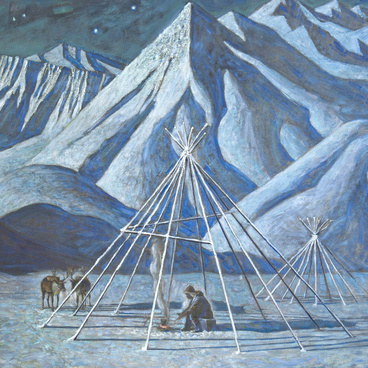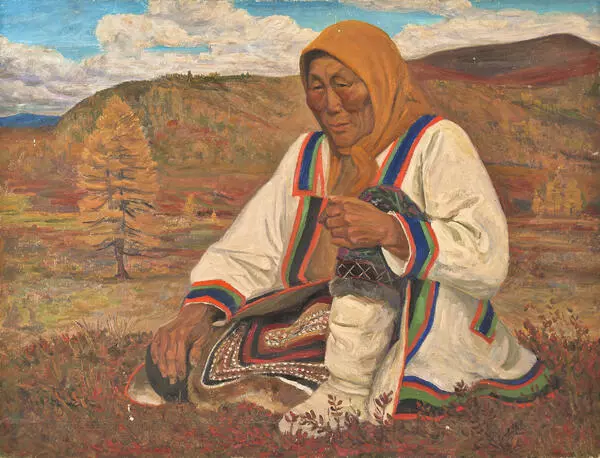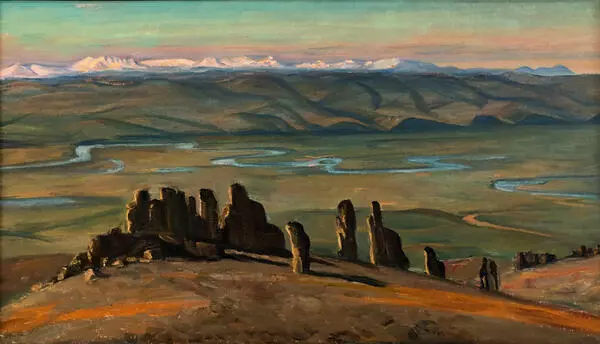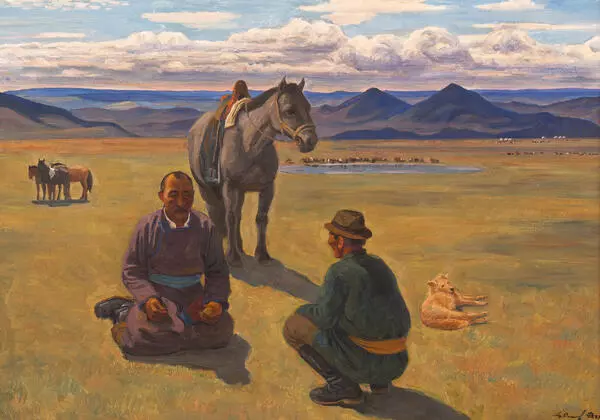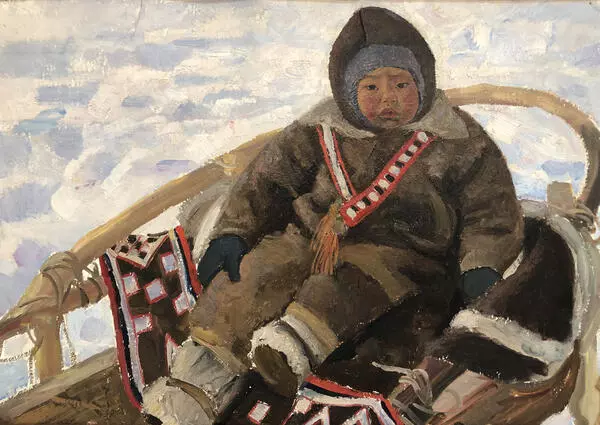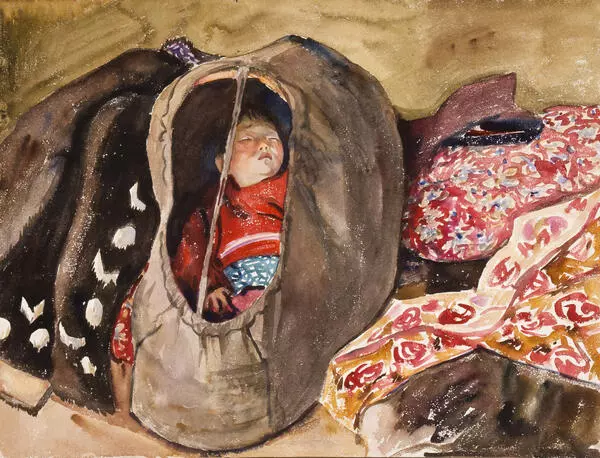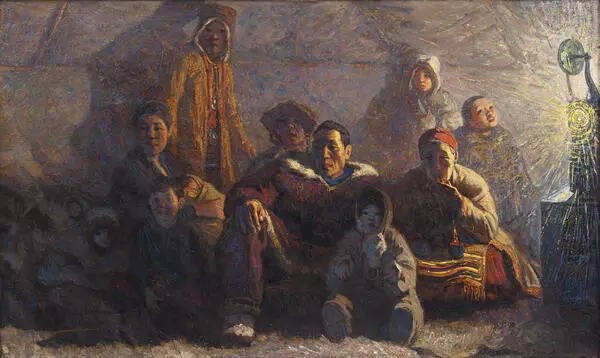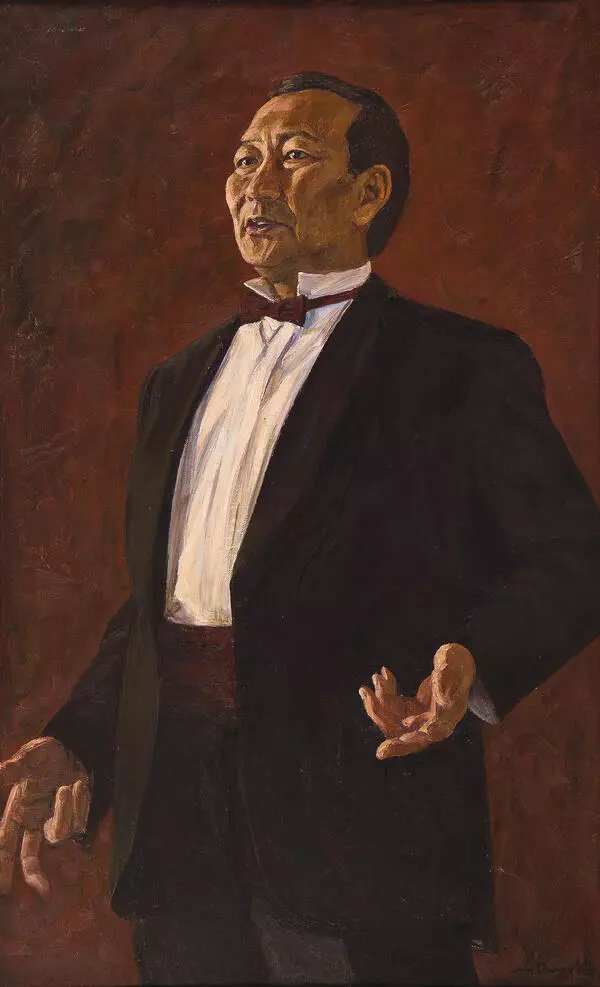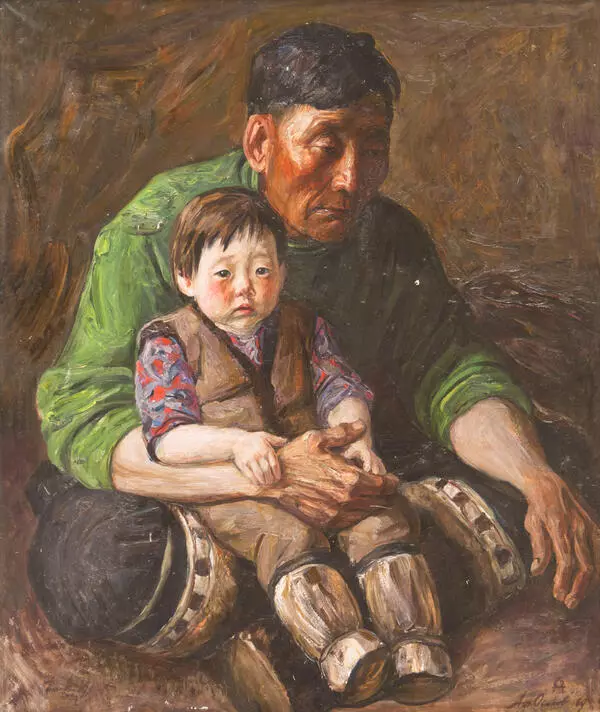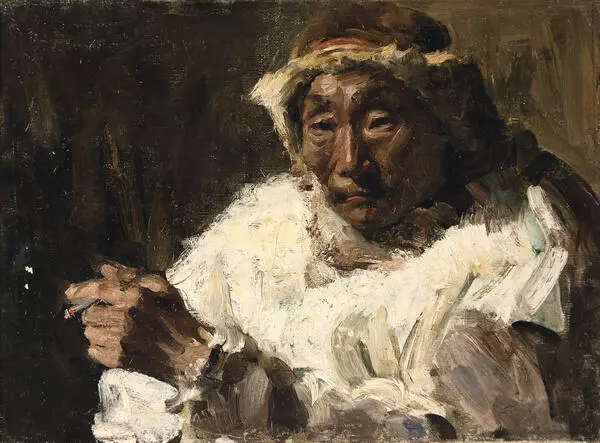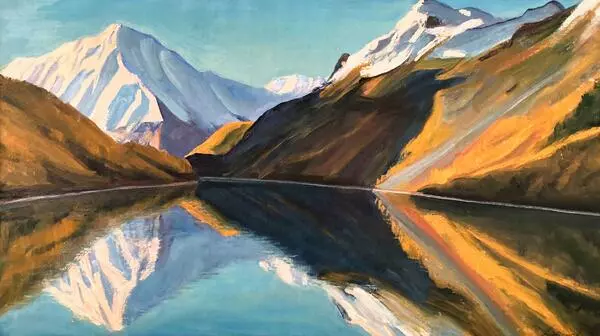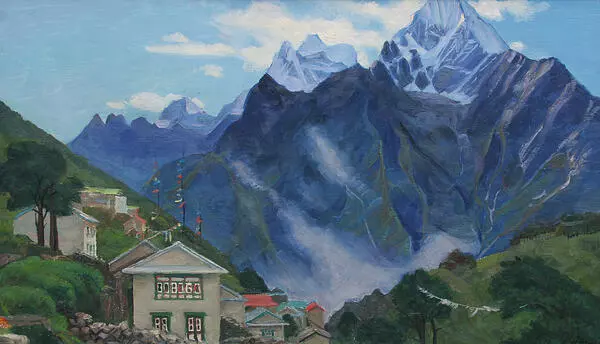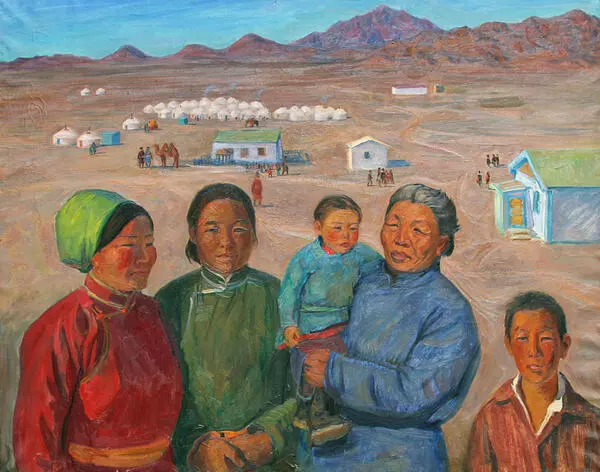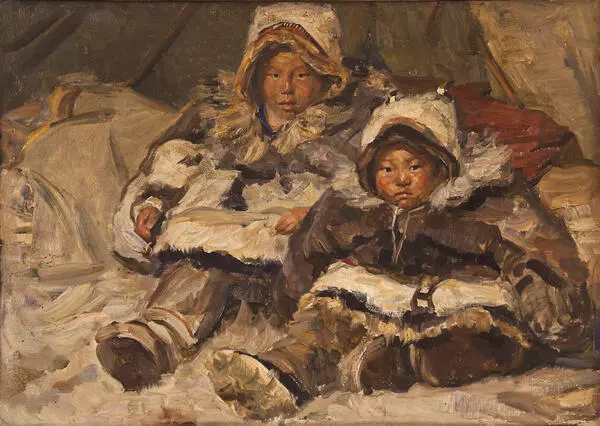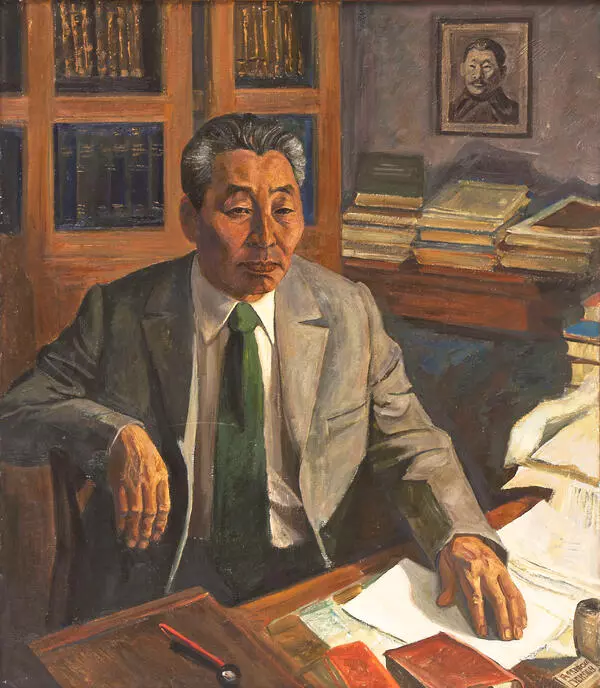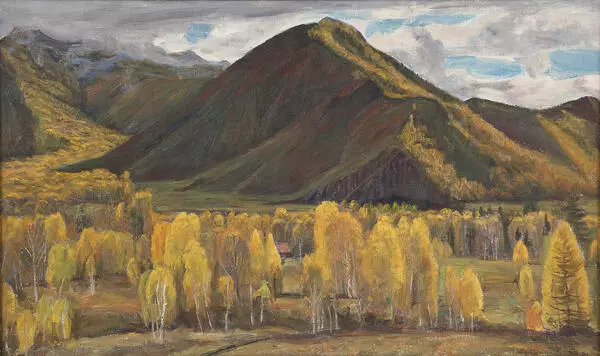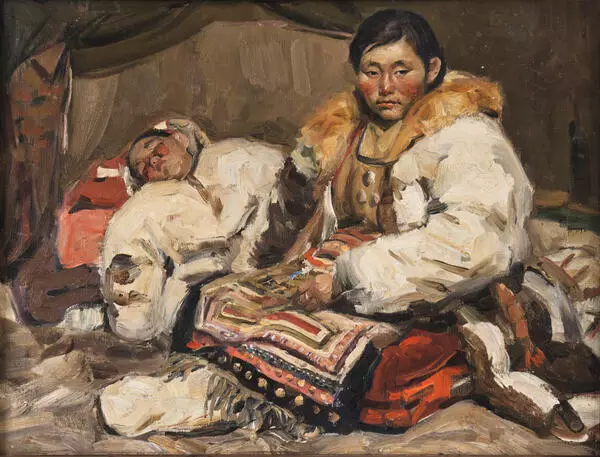Yakut painter Afanasy Osipov was born on February 28, 1928. He studied painting at the Moscow State Academic Art Institute named after V.I. Surikov, after which he returned to his homeland Yakutia. Osipov participated in all-union and foreign art exhibitions, became a People’s Artist of the USSR, an academician of the Russian Academy of Arts, and was awarded the I. Repin State Prize of the RSFSR.
The National Art Museum of the Republic of Sakha (Yakutia) features Afanasy Osipov’s triptych ‘Arkhangai Arats’ created by the artist in 1986. A triptych is a work consisting of three parts united by a common idea. Afanasy Osipov dedicated it to the Arkhangai Arats. This is the name of the nomadic people who live in the area of Arkhangai on the territory of modern Mongolia. Their main occupation is cattle breeding.
While working a lot from nature previously, the artist created a triptych in Yakutsk. The portrait ‘Brigadier Golbodrakh’, etude ‘Halt of Drovers’, and other works from the ‘Mongolian Cycle’ served as working material for the painter. In Mongolia, he was introduced to a new culture.
Each part of the triptych depicts a different state of the day and different motives of nature. They are united by a single horizon line closed by mountain ranges and a single golden color of the earth. The central part of the ‘Stranger’ features a horse-riding Mongol drover in national clothes. Drovers in the steppe zone of Central Asia are called drovers of the herd, that is, herds of cattle. Peaked cap expressively highlights the vertical figure of the rider. The expanse of the steppe and the freedom of space are conveyed in these canvases by strong painting with an open texture and intensive use of pure color, which gives the paintings with all the persuasiveness and accuracy of tone transmission a bright decorative beauty of the Mongolian land. The artist paints a high blue sky, a golden plain, cold blue-purple mountains, and long falling shadows. The sun’s warmth emanates from the scorched steppe grass plucked by horses.
The National Art Museum of the Republic of Sakha (Yakutia) features Afanasy Osipov’s triptych ‘Arkhangai Arats’ created by the artist in 1986. A triptych is a work consisting of three parts united by a common idea. Afanasy Osipov dedicated it to the Arkhangai Arats. This is the name of the nomadic people who live in the area of Arkhangai on the territory of modern Mongolia. Their main occupation is cattle breeding.
While working a lot from nature previously, the artist created a triptych in Yakutsk. The portrait ‘Brigadier Golbodrakh’, etude ‘Halt of Drovers’, and other works from the ‘Mongolian Cycle’ served as working material for the painter. In Mongolia, he was introduced to a new culture.
Each part of the triptych depicts a different state of the day and different motives of nature. They are united by a single horizon line closed by mountain ranges and a single golden color of the earth. The central part of the ‘Stranger’ features a horse-riding Mongol drover in national clothes. Drovers in the steppe zone of Central Asia are called drovers of the herd, that is, herds of cattle. Peaked cap expressively highlights the vertical figure of the rider. The expanse of the steppe and the freedom of space are conveyed in these canvases by strong painting with an open texture and intensive use of pure color, which gives the paintings with all the persuasiveness and accuracy of tone transmission a bright decorative beauty of the Mongolian land. The artist paints a high blue sky, a golden plain, cold blue-purple mountains, and long falling shadows. The sun’s warmth emanates from the scorched steppe grass plucked by horses.


